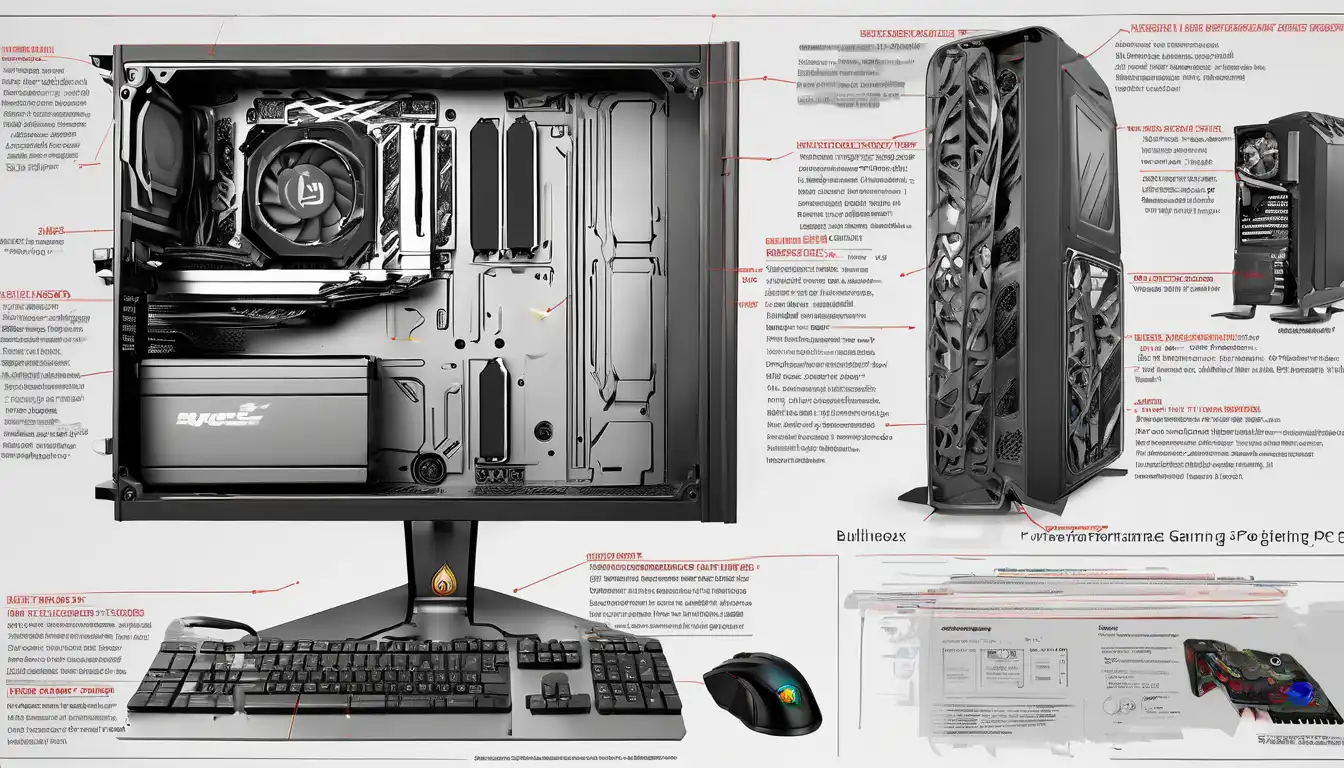Introduction to High-Performance Gaming PC Assembly
Building a high-performance gaming PC represents one of the most rewarding experiences for any gaming enthusiast. Unlike pre-built systems, custom-built gaming computers offer unparalleled flexibility, allowing you to select each component based on your specific gaming requirements and budget constraints. This comprehensive guide will walk you through the entire process of creating a powerful gaming rig that delivers exceptional performance across all your favorite titles.
Whether you're aiming for smooth 4K gaming, high refresh rate competitive play, or future-proofing your setup for upcoming releases, understanding how to properly select and assemble components is crucial. The journey begins with careful planning and component selection, followed by meticulous assembly and optimization.
Essential Components for Your Gaming Build
Central Processing Unit (CPU)
The CPU serves as the brain of your gaming PC, handling game logic, physics calculations, and AI processing. For modern gaming, we recommend processors from Intel's Core i5/i7/i9 series or AMD's Ryzen 5/7/9 lineup. Consider factors like core count, clock speed, and thermal design power when making your selection. Higher core counts benefit multitasking and streaming, while faster clock speeds improve gaming performance.
Graphics Processing Unit (GPU)
Your graphics card is arguably the most critical component for gaming performance. NVIDIA's RTX series and AMD's Radeon RX cards offer excellent options across various price points. When choosing a GPU, consider your target resolution and refresh rate. For 1080p gaming, mid-range cards suffice, while 1440p and 4K gaming demand high-end models with ample VRAM.
Motherboard Selection
The motherboard acts as the foundation connecting all your components. Ensure compatibility with your chosen CPU socket type and consider features like PCIe slots, RAM capacity, connectivity options, and future upgrade potential. ATX motherboards offer the most expansion options, while micro-ATX provides a compact alternative.
Memory (RAM)
Modern gaming requires at least 16GB of DDR4 or DDR5 RAM for optimal performance. Consider 32GB if you plan to stream, run multiple applications simultaneously, or play memory-intensive games. Pay attention to RAM speed and latency timings, as these impact overall system responsiveness.
Storage Solutions
Combine fast NVMe SSDs for your operating system and games with larger capacity HDDs for media storage. NVMe drives dramatically reduce loading times, while SATA SSDs offer a cost-effective alternative. Consider our storage optimization guide for detailed configuration recommendations.
Power Supply Unit (PSU)
Select a high-quality PSU with sufficient wattage to power all components comfortably. Look for 80 Plus Bronze certification or higher for efficiency. Modular PSUs simplify cable management, contributing to better airflow and aesthetics.
Cooling Systems
Proper cooling maintains performance and extends component lifespan. Air coolers offer reliable performance, while liquid cooling systems provide superior thermal management for overclocked systems. Case fans and proper airflow configuration are equally important.
Step-by-Step Assembly Process
Preparation and Safety
Begin by preparing your workspace with adequate lighting and anti-static precautions. Gather all necessary tools, including screwdrivers, cable ties, and thermal paste. Always ground yourself before handling components to prevent electrostatic discharge damage.
Motherboard Installation
Install the CPU, RAM, and M.2 drives onto the motherboard before mounting it in the case. Apply thermal paste carefully if using an aftermarket cooler. Secure the motherboard using standoffs to prevent short circuits.
Component Integration
Mount the power supply, followed by storage drives. Install the graphics card in the primary PCIe slot, ensuring proper engagement. Connect all power cables, front panel connectors, and data cables methodically.
Cable Management
Proper cable management improves airflow and aesthetics. Route cables behind the motherboard tray when possible and use zip ties to secure loose wires. Good cable management also simplifies future upgrades and maintenance.
System Optimization and Testing
BIOS Configuration
Access the BIOS to enable XMP/DOCP profiles for optimal RAM performance. Configure boot priorities and ensure all components are recognized correctly. Update to the latest BIOS version for improved stability and compatibility.
Operating System Installation
Install your preferred operating system, followed by essential drivers from component manufacturers' websites. Create system restore points before major software installations.
Performance Benchmarking
Use benchmarking tools like 3DMark and UserBenchmark to verify system performance. Monitor temperatures under load using HWMonitor or similar software. For advanced optimization techniques, consult our gaming PC optimization guide.
Game Testing and Fine-Tuning
Test your system with demanding games to ensure stability. Adjust graphics settings to find the perfect balance between visual quality and performance. Monitor frame rates and temperatures during extended gaming sessions.
Maintenance and Future Upgrades
Regular maintenance ensures long-term performance. Clean dust filters monthly and perform thorough internal cleaning every six months. Monitor component temperatures and update drivers regularly.
Plan future upgrades by selecting components with upgrade paths in mind. Consider GPU upgrades every 2-3 years and CPU/motherboard updates every 4-5 years to maintain competitive performance.
Conclusion
Building a high-performance gaming PC requires careful planning, proper component selection, and meticulous assembly. By following this comprehensive guide, you'll create a system tailored to your specific gaming needs that delivers exceptional performance and reliability. Remember that the building process is as rewarding as the final result, providing valuable knowledge for future upgrades and troubleshooting.
For additional resources and community support, explore our PC building forum where experienced builders share insights and solutions. Happy building!
